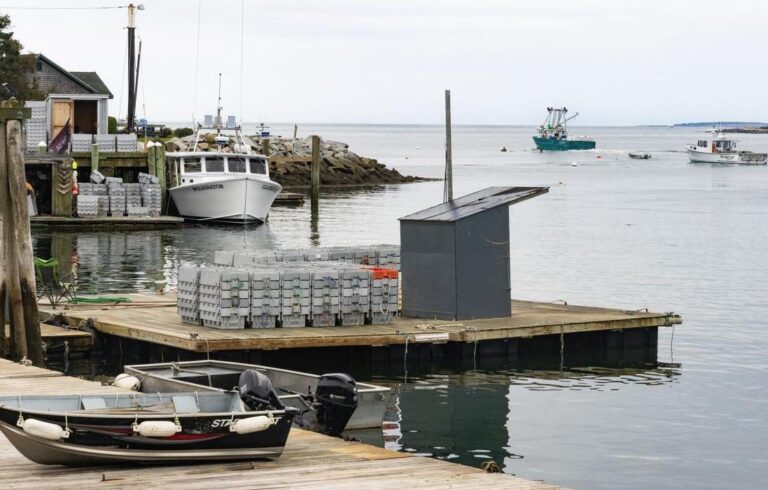Reflections is written by Island Institute Fellows, recent college grads who do community service work on Maine islands and in coastal communities through the Island Institute, publisher of The Working Waterfront.
For me, the magic of Maine lies in the food—everything we fish, forage, and farm to feed each other.
I learned about lowbush blueberries on the first day of my fellowship. I was visiting the aptly named Blueberry Cove, where the Island Institute gathers Fellows each year for a retreat and orientation. It is the perfect place to get to know one another and our new home, complete with a swimming beach, a trail through the forest, and an elaborate garden.
I was drawn into the garden with the promise of taking with me whatever I could harvest. I’m not sure I had ever seen a blueberry bush before, let alone the small, lowbush berries that Maine is so well-known for, but I managed to pick a full carton. I was amazed by their flavor, their history, and their ability to thrive in what seemed to be a harsh landscape.
I have found there is nothing more rewarding than feeding my community.
As a proud Midwesterner, agriculture is close to my heart. My childhood home is surrounded by fields of corn and soy, spread in every direction. Since grade school, I have been able to recite the basics of crop rotation, tell stories of death-defying crop-dusters flying overhead, and confirm that there are indeed more pigs than people in our small state. However, Maine has taught me more about food—and life—than I could have ever imagined.
I was raised on sweet corn and smoked barbecue. When I moved to Deer Isle, I discovered so many new foods for the very first time: wild strawberries, raw milk, Atlantic rock crab (cracked open with a rock), pickled tiger tomatoes, salt cod with boiled potatoes, Four Season’s sweet winter carrots, and live lobster fresh from Stonington waters.

Over the last two years, farm-fresh food has become the focus of my fellowship with the Healthy Island Project. At the peak of the season, you can find me coordinating farmers for our online FarmDrop store, distributing fresh produce with the Magic Food Bus, and managing SNAP-EBT at the Stonington Farmer’s Market.
Our work continues year-round with an online food pantry, grocery-filled backpacks sent home with students, and a hot lunch delivered to more than 100 seniors each week. Whether it’s the late-summer husk cherries or a warm meal on a cold winter’s day, I have found there is nothing more rewarding than feeding my community.
While I oversee hundreds of pounds of produce each week, I worry that Deer Isle is increasingly vulnerable to food insecurity. Despite the many millions of dollars generated from lobster each year, almost a third of our population is low-income. The cost of food seems to rise every year—already 20% more than the state average—along with housing, healthcare, and transportation. While these statistics are striking, it’s what we can’t measure that worries me most: isolation. So many of the people I feed at work are truly alone.
When I go home at the end of the day, I try my best not to leave them behind. I often hear that island culture can be traced back to times of scarcity and survival. We struggle with what little we have, but when we come together, there is always enough to go around.
Healthy Island Project is working hard to sustain our impact and respond to growing needs. Fortunately, while we may be one of the most remote and rural communities on the coast, we certainly are not alone in our efforts. We receive incredible support everyday: messages of gratitude, thousands of volunteer hours, and donations from across the country.
I truly believe the island can survive anything, and I’ve seen countless meal trains, bean suppers, and bake sales that prove just how much we care for one another. From fishing to famine, food is a way of life in Deer Isle.
Hallie Lartius works with Deer Isle-Stonington’s Healthy Island Project, a nonprofit organization that coordinates projects to promote healthy living.





